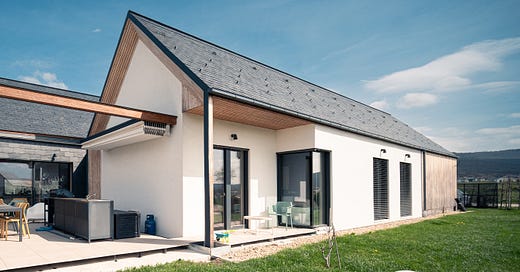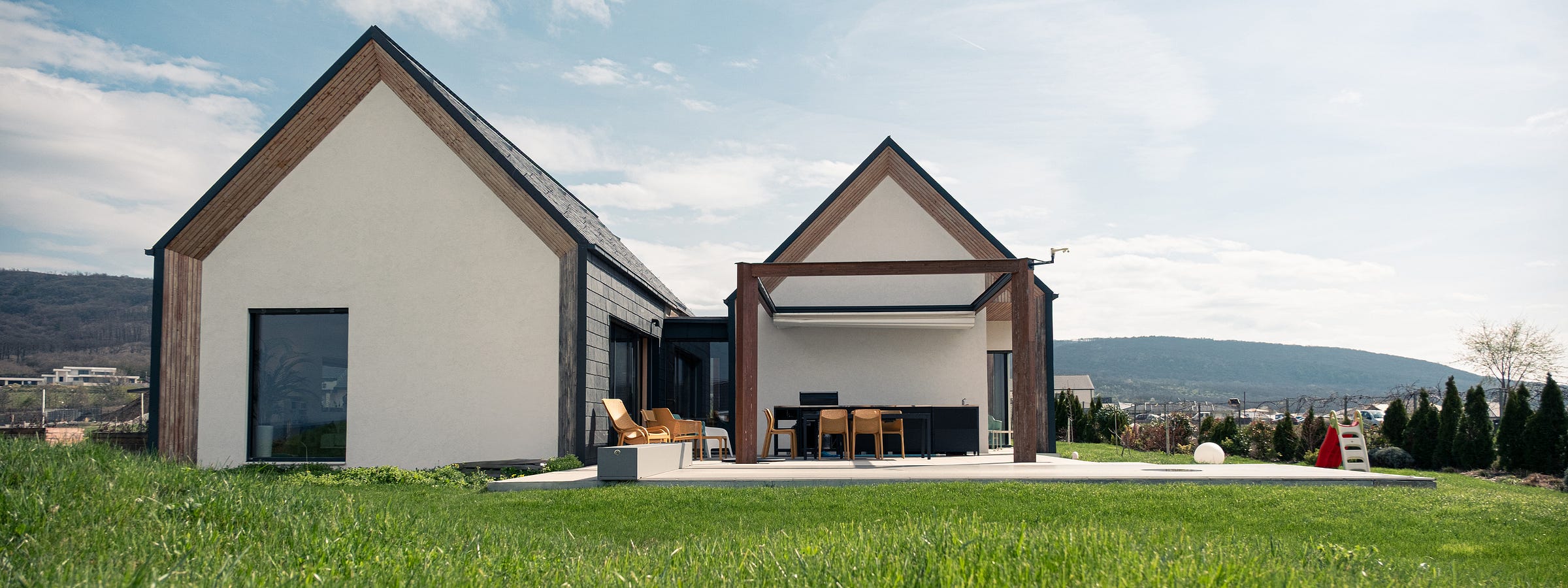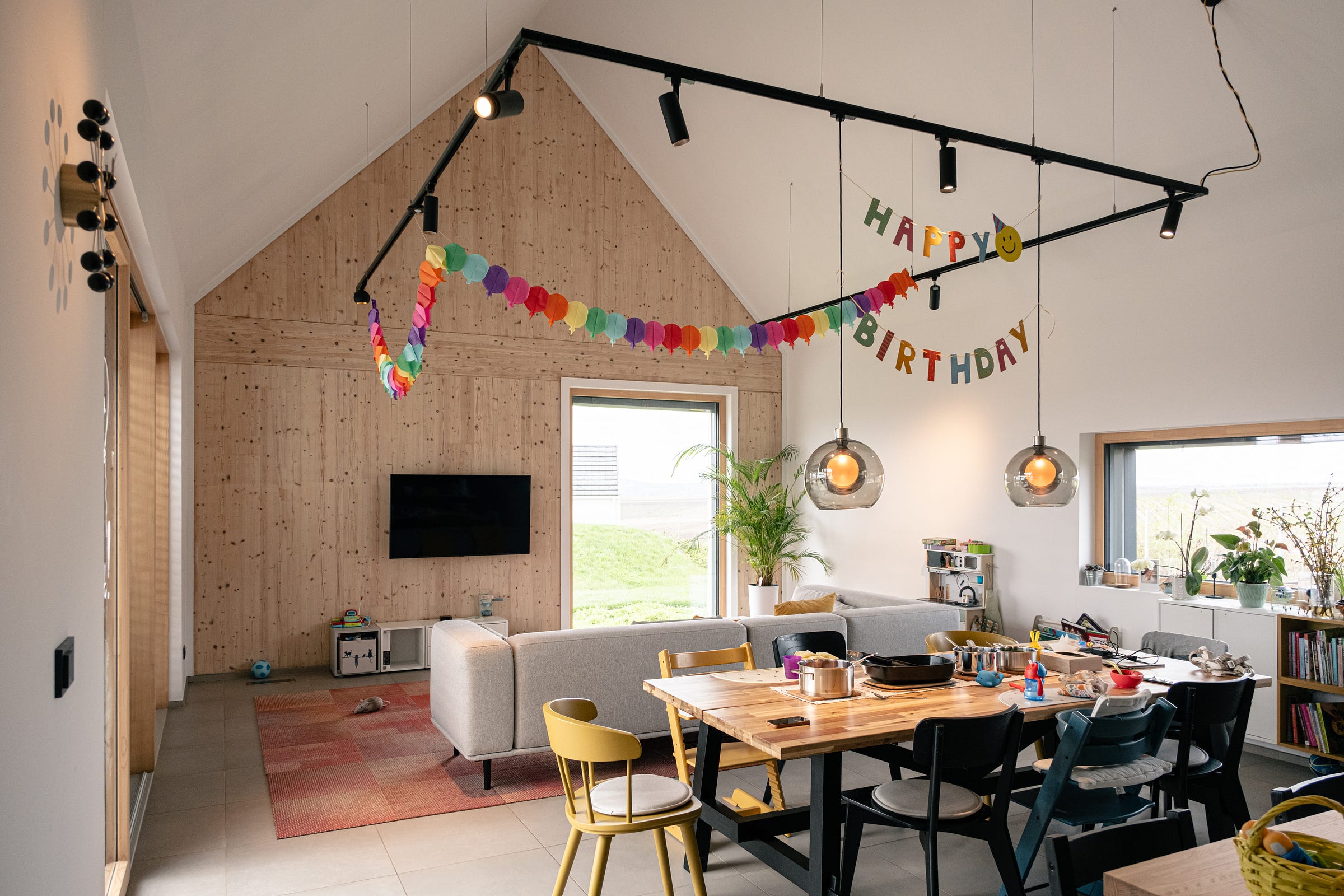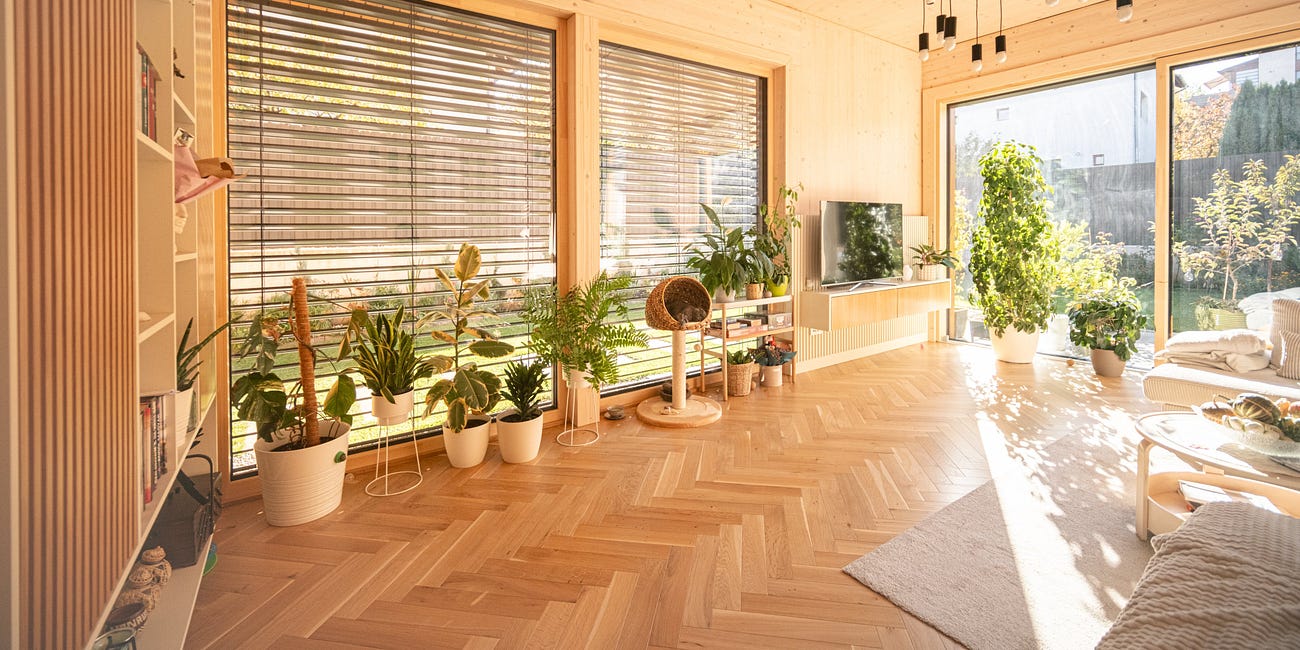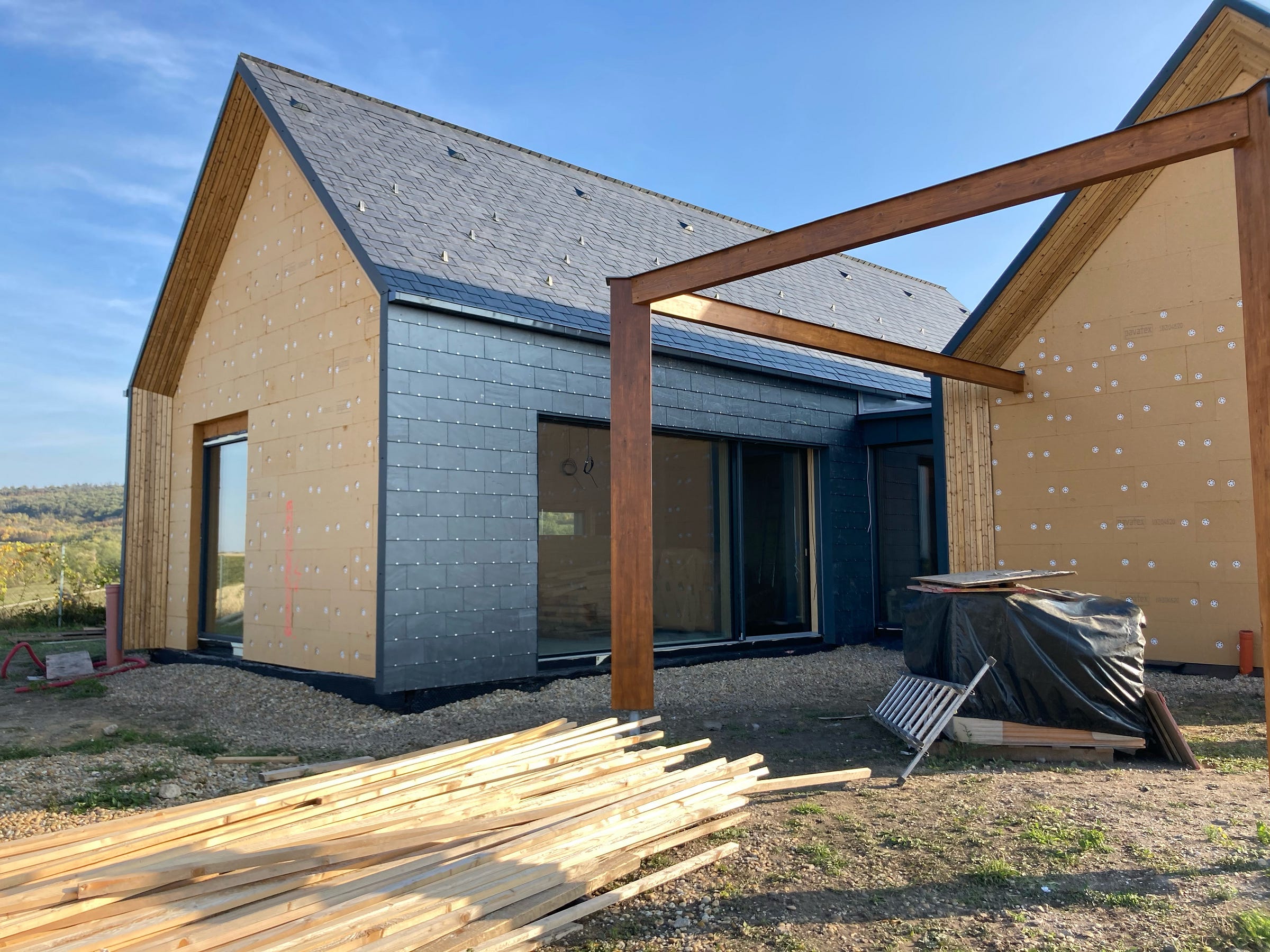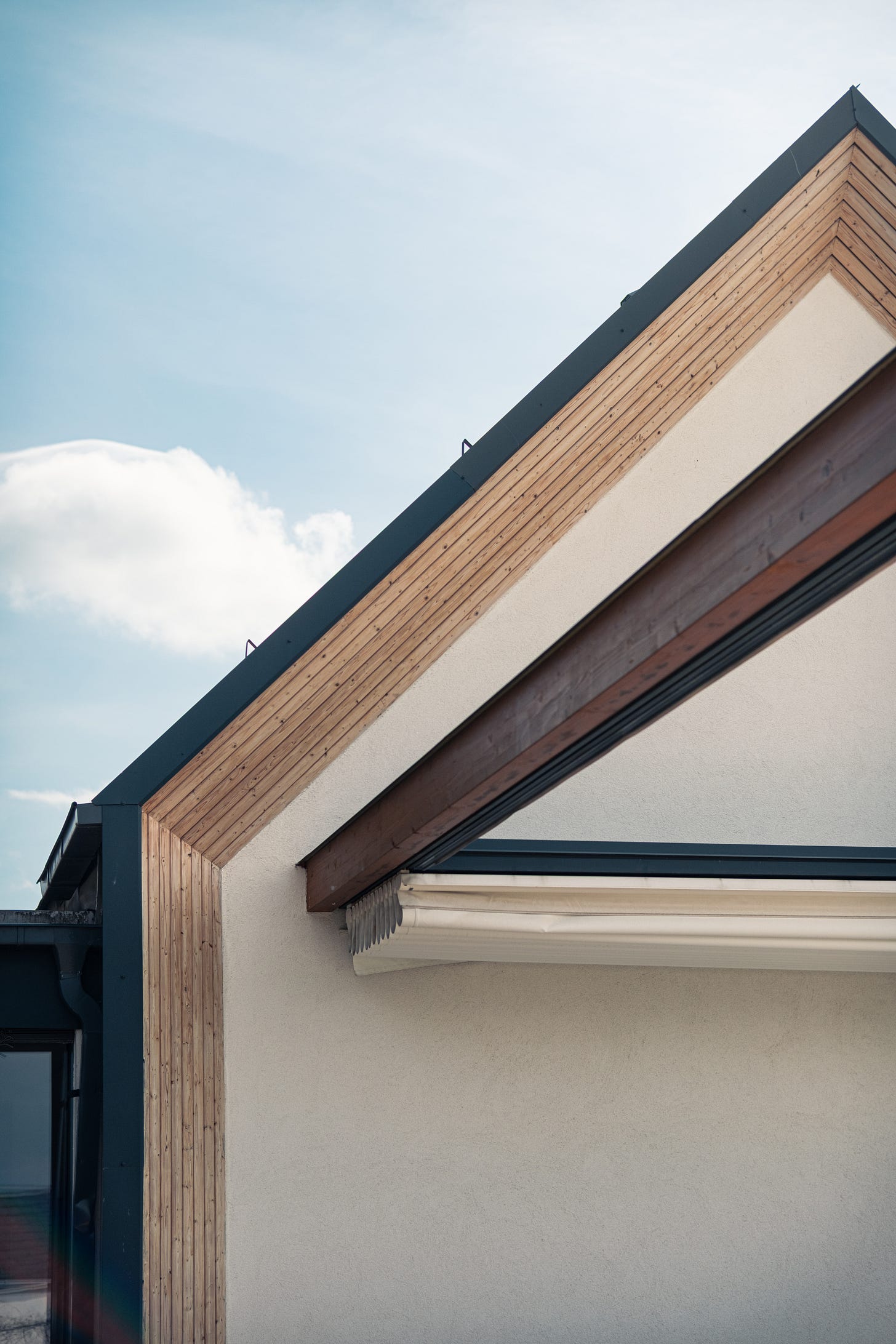Case study home #3 - Vernacular vibes near Budapest
Local vernacular passive house among the vines
This case study is about a home we designed and built near Budapest in 2020, nestled among rolling vineyard hills that undulate in an eternal rhythm.
This rural setting strongly influenced the architecture, which adopts a timeless vernacular farmhouse volume with minimal detailing.
The functions are laid out on a single level with every room enjoying a direct visual connection to the hills and the garden.
The overall form is composed of two compact, staggered volumes, with the long side completely open to the south to maximize solar gain for winter heating.
The staggered volumes help maximise south solar gains so every room has many sunlit hours even in the depth of December.
We increased intimacy of each family member and the master suite by separating the bedrooms with the bathroom and dressing/closet spaces.
The living area takes the form of a spectacular barn-like space, with a mezzanine housing an office and guest sleeping space, giving function to every nook. The high ceilings help make the living spaces feel much bigger than they actually are.

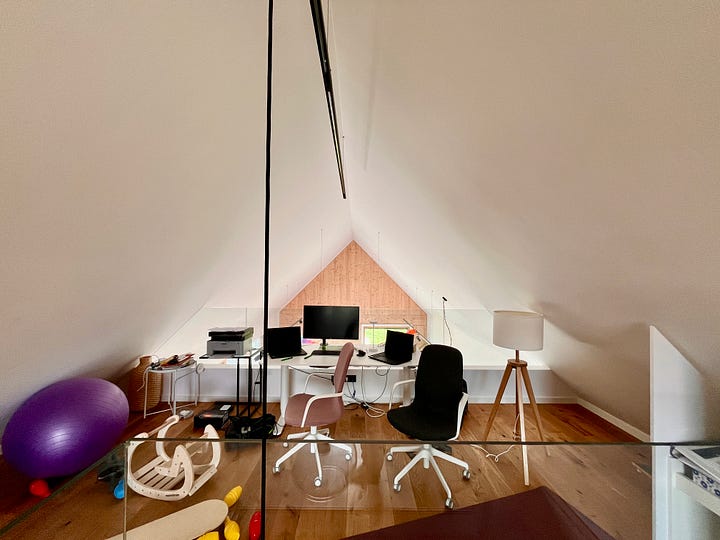
The sleeping wing houses 3 bedrooms, one master with a walk-in and two for children with 2 bathrooms in total. All this fits into 160 sqm / 1722 sq ft useable area. A two-car garage in front is added to these functions that is separate from the house’s thermal envelope.
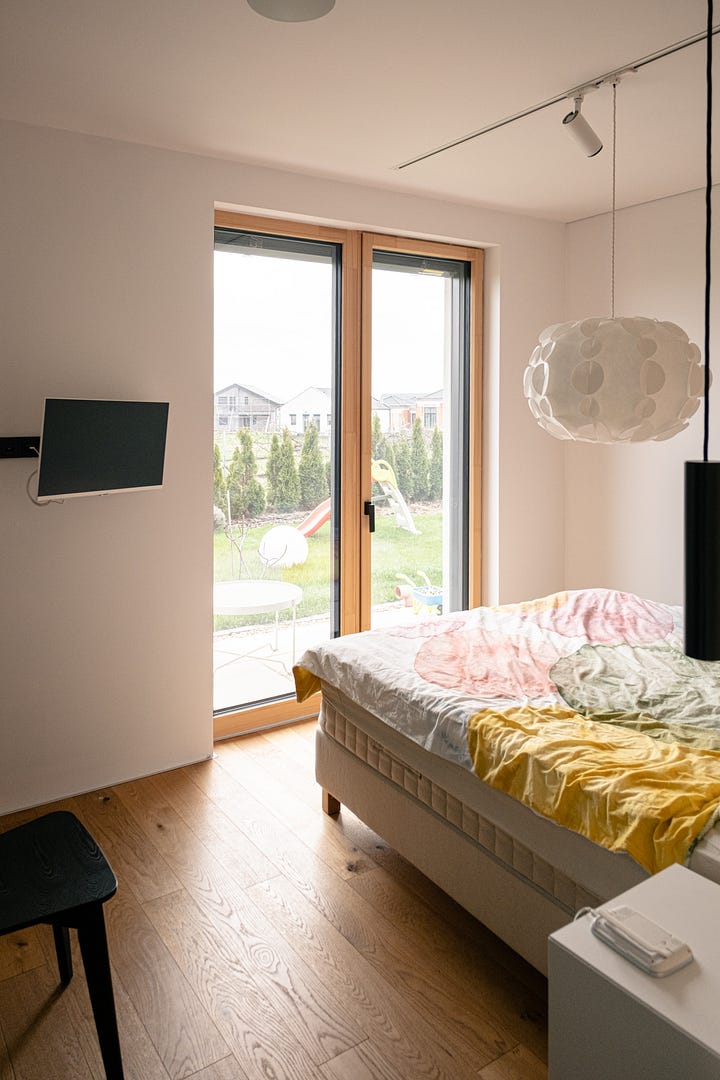

The split living/sleeping areas help manage noise levels in the home, children can retreat in silence while adults have a longer evening for example.
The tall and narrow windows let the sunlight in the winter as deep as possible.
Materials and Structure
The structure of the house is CLT (cross-laminated timber) much of which remains exposed, serving as an organic and aesthetic element of the interior design. Here’s a series of articles I wrote about the CLT/mass timber technology:
Mass Timber Architecture (CLT) I.
Yes, it is here! I am finally done with my two-part piece about mass timber architecture. If you found me on X, you know most of my new builds are timber—more specifically, mass timber or CLT (Cross-Laminated Timber) structures.
We insulated the house entirely with wood fiber, a 100% recycled material offering excellent thermal performance in both winter and summer.
It is safe to say that my all time favorite stone material is slate. It may not be as supremely beautiful as marble but it has a unique mix of qualities that actually make it widely applicable in architecture.


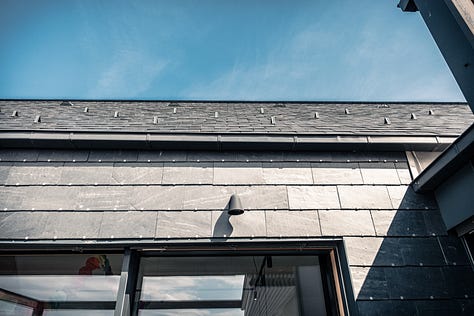
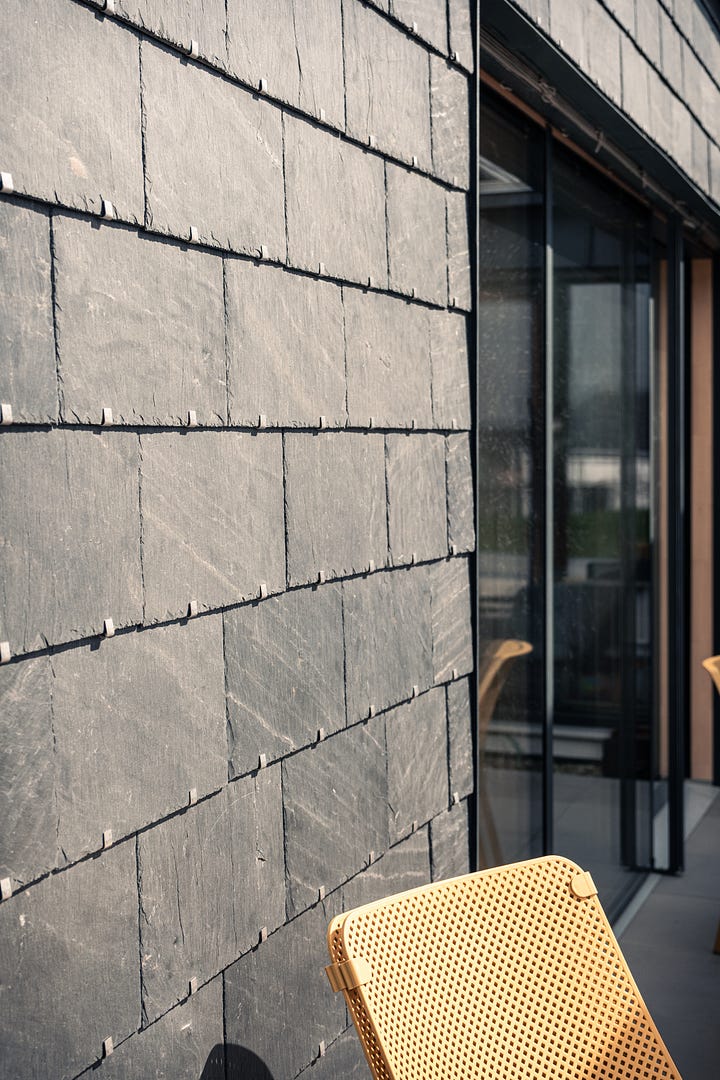
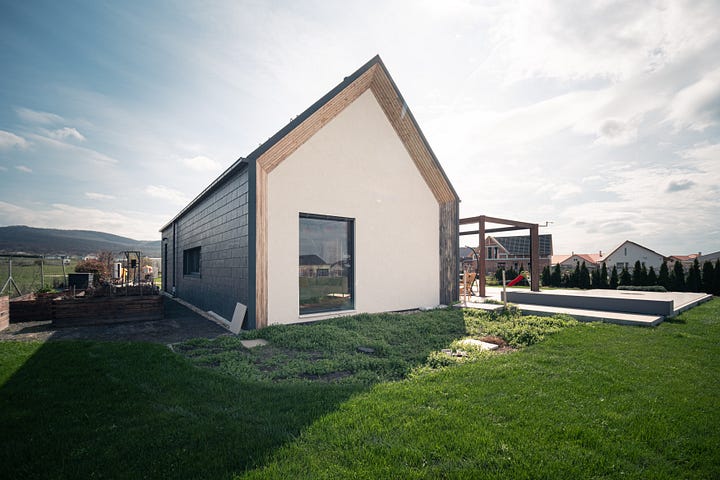
It can be cut into very thin, 6-8mm shingles, with natural cut edges and used as a cladding material for literally anything. Roofs, eaves, walls, terraces, you name it. It was widely used in European traditional architecture for many centuries and even in the US. It is more expensive than conventional shingles or clay tiles but it is more lightweight and has a proven 100+ year durability.
It fits both in a vernacular and urban context if designed well.
The eaves are finished with thermally treated wood.
Symmetry and proportions

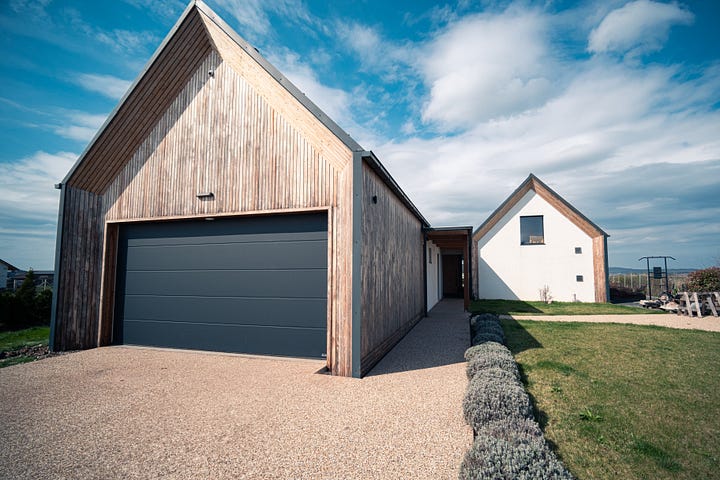
What I love about the overall concept is how tall and graceful this small house feels.
The symmetry of the gabled volumes and the eave (3.2m, 11ft) and ridge height (6.4m, 21ft) achieve a calm balance.
They also create positive spaces all around the house, the entrance, the wind-protected terrace help draw people out of the house when weather is nice.
Passive House Technologies
The house is a passive house equipped with a centralised heat recovery ventilation system with 88% heat recovery efficiency.
Beyond its high energy efficiency, this system contributes to a healthy and comfortable indoor environment by reducing excess humidity and preventing mold.
By filtering incoming air and efficiently removing polluted air, it significantly improves indoor air quality, especially in winter, supporting the well-being and health of the inhabitants.
Additional heat is provided by an air-to-water heat pump and distributed through underfloor heating in each room.
That’s it about our design & build home near Budapest. Let me know what you do think about it in the comments below!

